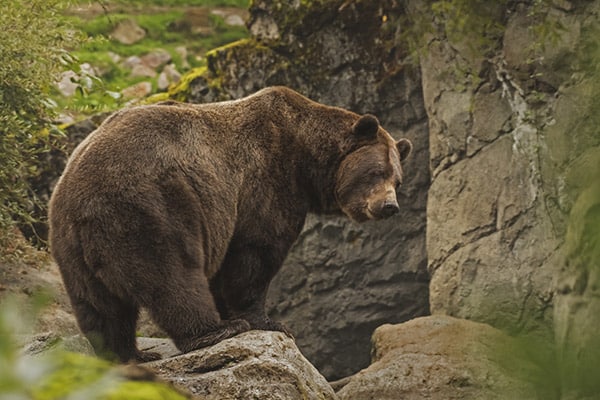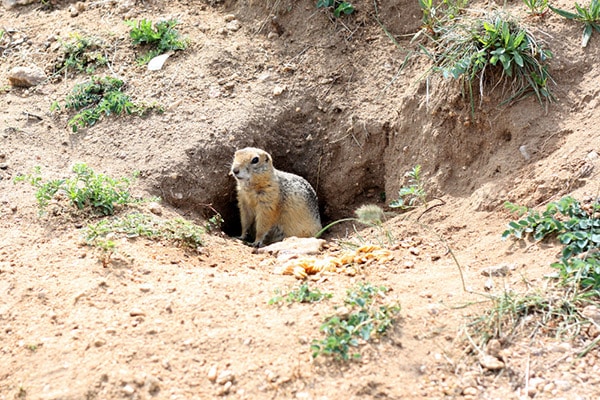Deer, belonging to the family Cervidae and being herbivorous ruminants, can live anywhere from a few years to more than two decades.
However, their average lifespan varies greatly depending on whether they are living in the wild or in captivity.
In the wild, the average lifespan of a deer is approximately 4½ years.

This number differs between males and females; bucks usually live around 2.9 years, while does often reach 6½ years.
On the other hand, deer in captivity tend to live longer, with an average lifespan of 15 to 20 years.
Some deer have even been recorded living into their early 20s, both in captivity and in the wild.
Factors Influencing Deer Lifespan

Genetics and Lifespan
Deer lifespan can be influenced by genetic factors.
Just like in humans, some deer may have genes that make them more resistant to aging and diseases, while others might be more susceptible to these factors.
This genetic variation can play a role in the overall lifespan of deer populations, particularly when it comes to fawn mortality and the survivability of mature deer.
Role of Nutrition in Deer Lifespan
Good nutrition is essential to support a long lifespan for deer.
Deer that have access to high-quality and abundant food sources are more likely to thrive and live longer lives than those in habitats with limited resources.
This is particularly true for fawns, which are more susceptible to poor nutrition and the related health consequences.
In fact, fawn mortality rates can be significantly affected by the availability and quality of food in their environment.
Impact of Disease on Deer Lifespan
Deer can be affected by various diseases, which can shorten their natural lifespans considerably.
Some of the common diseases that impact deer populations include chronic wasting disease (CWD), bovine tuberculosis, epizootic hemorrhagic disease, and mange.
These diseases can spread rapidly among deer herds, leading to high levels of mortality and significantly decreasing the life expectancy of affected individuals.
Effects of Predation and Hunting
Predation and hunting are both important factors that can influence deer mortality rates.
Natural predators such as coyotes and bobcats can cause significant mortality in deer populations, particularly among fawns.
Hunters also contribute to deer mortality, especially during the deer hunting season.
Although hunting pressure can be managed to promote sustainable populations, high hunting pressure can lead to decreased life expectancy in deer populations.
Influence of Extreme Weather and Natural Disasters
Deer populations can be adversely affected by extreme weather events and natural disasters, including harsh winter conditions, fires, and winter kill.
These events can disrupt food availability, increase the risk of vehicle collisions, and decrease the overall survivability of deer populations.
Especially long and severe winters can deplete the fat stores in deer, making them more susceptible to disease, predation, and other mortality factors.
When such events occur, they can significantly impact the lifespan of affected deer populations.
Comparing Lifespan Across Deer Species

Whitetail Deer Lifespan
White-tailed deer have a lifespan of 3-6 years in the wild.
The survival rate of fawns in their first year can be between 33% and 68%, depending on factors like habitat, predators, and weather conditions.
As for captive whitetails, their lifespan can increase, with some living over 20 years.
Female white-tailed deer have been known to give birth to fawns even during their later years.
Mule Deer Lifespan
Mule deer, commonly found in the western regions of North America, have a similar lifespan to their white-tailed counterparts.
In the wild, mule deer can live from 3-6 years, but their lives are often cut short by hunting and habitat destruction.
Captive mule deer benefit from a more stable environment, allowing them to live up to 20 years or longer.
Red Deer Lifespan
Red deer, native to Europe, Western Asia, and Northern Africa, are known for their impressive size and antlers.
These majestic creatures can live up to 10-15 years in the wild, depending on factors like hunting pressure and natural predators.
Like other deer species, red deer in captivity can live longer, reaching up to 20 years or more.
Roe Deer Lifespan
Roe deer, which are smaller deer species found across Europe and parts of Asia, tend to have a shorter lifespan than other deer.
In the wild, roe deer typically live around 6-8 years, with predation, hunting, and habitat destruction factors affecting their survival.
However, in captivity, they can live as long as 10-15 years.
Deer Lifespan in the Wild vs Captivity

When considering the lifespan of a deer, it’s important to compare their lives in the wild versus captivity.
In the wild, deer have a myriad of factors impacting their lifetimes, making it a challenging environment.
On average, a deer can live to be about four and a half years old in the wild.
However, some cases of deer living into their early 20s in the wild have been reported.
In captivity, such as in zoos or wildlife reserves, deer’s lifetimes tend to be longer.
In these controlled environments, their average lifespan can range from 15 to 20 years.
Providing a stable environment, proper diet, and healthcare can greatly extend their lives, with some deer even living up to 25 years.
Despite their extended lifespans in captivity, it’s worth noting that deer are social animals.
They thrive in environments with ample opportunities to interact with their own species, which is why it’s important to ensure captive deer have the chance to engage in social activities.
As you can see, the lifespan of a deer can vary greatly depending on whether they live in the wild or in captivity.
Captive deer tend to live longer due to fewer risks and better healthcare, while those in the wild face harsher conditions and lower life expectancies.
Deer Lifespan and Their Environment

When considering deer lifespan, it’s essential to account for various environmental factors that can influence how long deer live.
As a prey animal, deer must adapt to their habitat and the presence of predators, such as mountain lions and bears, which can impact their overall survival.
In the wild, deer usually live for around 6-8 years.
However, their age can range anywhere from four and a half to 14 years, depending on the habitat and region they occupy.
In captivity, deer tend to live longer, with some reaching up to 20 years of age.
A significant factor that influences deer lifespan is their habitat.
For example, Texas, known for having a large deer population, provides a more suitable environment for deer to thrive.
In areas with a higher carrying capacity, deer benefit from abundant food sources and space to grow, contributing to longer lifespans and bigger sizes.
Another critical factor in deer survival is the presence of predators and the type of habitat deer inhabit.
Mountain Lions and bears are common predators for deer in some regions.
Their predator-prey relationships can shape the overall deer population dynamics, including their age distribution.
So, when examining deer lifespan, it’s crucial to take into account factors like habitat, predators, and overall carrying capacity, which all contribute to the length of time these resilient creatures can survive in their environment.






